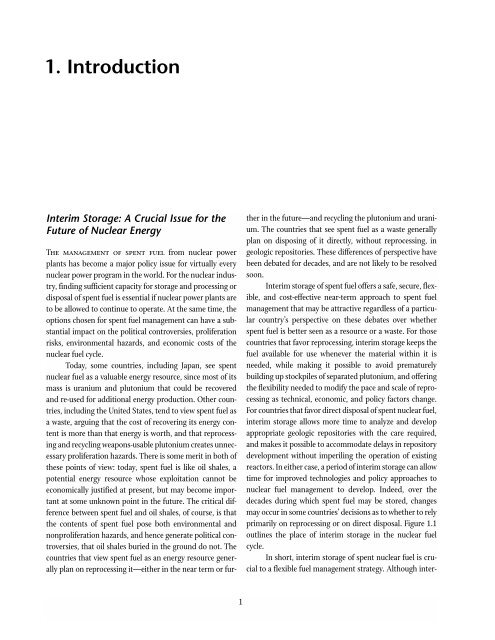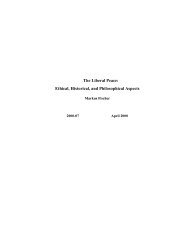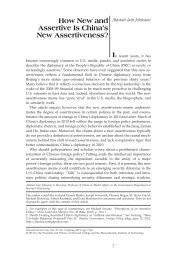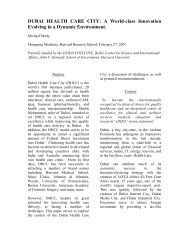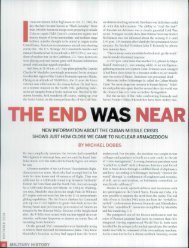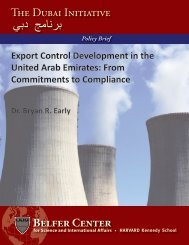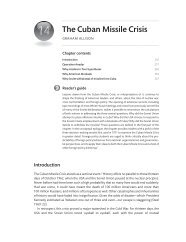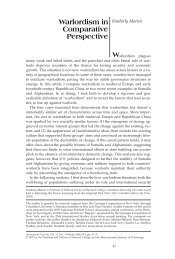Interim Storage of Spent Nuclear Fuel - Woods Hole Research Center
Interim Storage of Spent Nuclear Fuel - Woods Hole Research Center
Interim Storage of Spent Nuclear Fuel - Woods Hole Research Center
Create successful ePaper yourself
Turn your PDF publications into a flip-book with our unique Google optimized e-Paper software.
1. Introduction<br />
<strong>Interim</strong> <strong>Storage</strong>: A Crucial Issue for the<br />
Future <strong>of</strong> <strong>Nuclear</strong> Energy<br />
The management <strong>of</strong> spent fuel from nuclear power<br />
plants has become a major policy issue for virtually every<br />
nuclear power program in the world. For the nuclear industry,<br />
finding sufficient capacity for storage and processing or<br />
disposal <strong>of</strong> spent fuel is essential if nuclear power plants are<br />
to be allowed to continue to operate. At the same time, the<br />
options chosen for spent fuel management can have a substantial<br />
impact on the political controversies, proliferation<br />
risks, environmental hazards, and economic costs <strong>of</strong> the<br />
nuclear fuel cycle.<br />
Today, some countries, including Japan, see spent<br />
nuclear fuel as a valuable energy resource, since most <strong>of</strong> its<br />
mass is uranium and plutonium that could be recovered<br />
and re-used for additional energy production. Other countries,<br />
including the United States, tend to view spent fuel as<br />
a waste, arguing that the cost <strong>of</strong> recovering its energy content<br />
is more than that energy is worth, and that reprocessing<br />
and recycling weapons-usable plutonium creates unnecessary<br />
proliferation hazards. There is some merit in both <strong>of</strong><br />
these points <strong>of</strong> view: today, spent fuel is like oil shales, a<br />
potential energy resource whose exploitation cannot be<br />
economically justified at present, but may become important<br />
at some unknown point in the future. The critical difference<br />
between spent fuel and oil shales, <strong>of</strong> course, is that<br />
the contents <strong>of</strong> spent fuel pose both environmental and<br />
nonproliferation hazards, and hence generate political controversies,<br />
that oil shales buried in the ground do not. The<br />
countries that view spent fuel as an energy resource generally<br />
plan on reprocessing it—either in the near term or fur-<br />
1<br />
ther in the future—and recycling the plutonium and uranium.<br />
The countries that see spent fuel as a waste generally<br />
plan on disposing <strong>of</strong> it directly, without reprocessing, in<br />
geologic repositories. These differences <strong>of</strong> perspective have<br />
been debated for decades, and are not likely to be resolved<br />
soon.<br />
<strong>Interim</strong> storage <strong>of</strong> spent fuel <strong>of</strong>fers a safe, secure, flexible,<br />
and cost-effective near-term approach to spent fuel<br />
management that may be attractive regardless <strong>of</strong> a particular<br />
country’s perspective on these debates over whether<br />
spent fuel is better seen as a resource or a waste. For those<br />
countries that favor reprocessing, interim storage keeps the<br />
fuel available for use whenever the material within it is<br />
needed, while making it possible to avoid prematurely<br />
building up stockpiles <strong>of</strong> separated plutonium, and <strong>of</strong>fering<br />
the flexibility needed to modify the pace and scale <strong>of</strong> reprocessing<br />
as technical, economic, and policy factors change.<br />
For countries that favor direct disposal <strong>of</strong> spent nuclear fuel,<br />
interim storage allows more time to analyze and develop<br />
appropriate geologic repositories with the care required,<br />
and makes it possible to accommodate delays in repository<br />
development without imperiling the operation <strong>of</strong> existing<br />
reactors. In either case, a period <strong>of</strong> interim storage can allow<br />
time for improved technologies and policy approaches to<br />
nuclear fuel management to develop. Indeed, over the<br />
decades during which spent fuel may be stored, changes<br />
may occur in some countries’ decisions as to whether to rely<br />
primarily on reprocessing or on direct disposal. Figure 1.1<br />
outlines the place <strong>of</strong> interim storage in the nuclear fuel<br />
cycle.<br />
In short, interim storage <strong>of</strong> spent nuclear fuel is crucial<br />
to a flexible fuel management strategy. Although inter-


